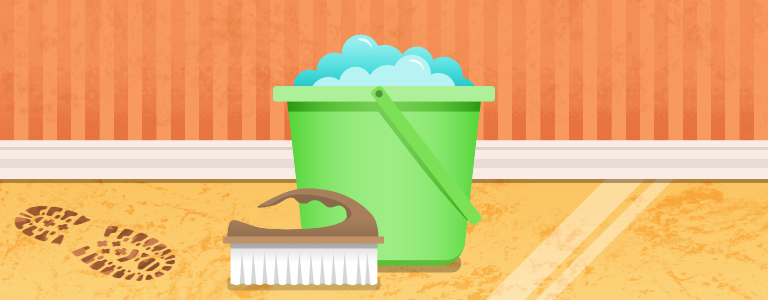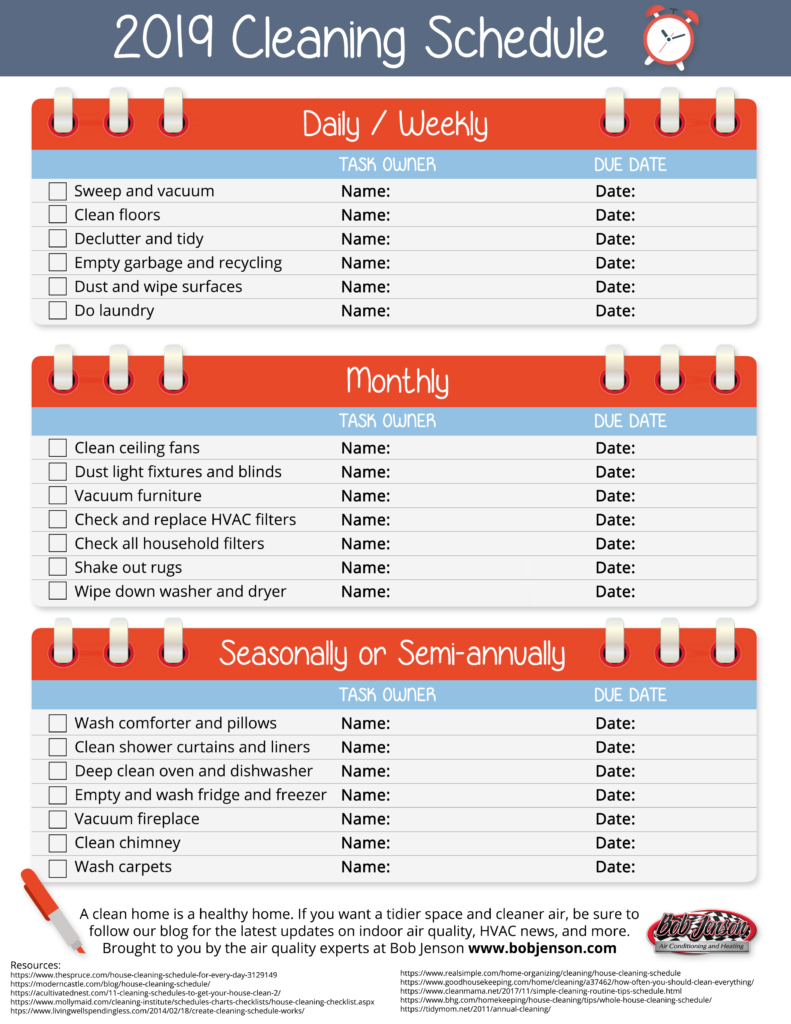How to Get the Whole Family on Board with Household Cleaning
Here on the Bob Jenson blog, we’ve talked regularly about the importance of keeping your home clean and dust-free and how those initiatives positively impact air quality and, in turn, the health of you and your family. However, household cleaning shouldn’t be the responsibility of any single person — maintaining good air quality is a task best tackled by your family as a team.
So what do you do when members of your family aren’t motivated to stay tidy, or when the kids start complaining about having to clean?
It’s easy for everyone to make excuses — what you have to do, as captain of Team Clean, is to transform cleaning the house into something that your family starts to enjoy conquering together. Here are a few ways how to do this:
Make a Chore List Together
Before you start putting together a cleaning schedule or shopping for cleaning products, you’re going to want to determine what needs to be cleaned around the house, and how often. To start, take a look at some of the biggest problem zones: bathrooms, playrooms, and kitchens are frequently in need of a good tidying up.
Next, determine who should be responsible for which cleaning chores. For example, you don’t want kids taking care of anything with cleaning chemicals or changing out the air filters, but they’re definitely capable of putting away their toys or dusting low shelves!
Once you’ve made your chore list, you’ll be ready for the next step: creating a chore chart.
Sort Out the Chore Chart
This is an effective way to keep families on track, especially those with young children. Put together a cleaning schedule in the form of a chart with columns for tasks, how often the cleaning needs to be done, when cleaning should happen, and who should be responsible. Depending on your household, it might even be valuable to have two different charts separated out by age-appropriate cleaning tasks: one for teens and adults, and one for the little ones.
Put the charts up somewhere visible like the kitchen fridge so nobody can miss them. You could even try making it more fun by using bright colors or stickers — Molly Maid has got some great, colorful chore chart templates, and the team at Bob Jenson has created a printable cleaning schedule just for this purpose.
Change It Up
Nobody’s going to want to do the exact same cleaning chores every week, so consider rotating different family members through the specified tasks. As you roll out the chores for the first few weeks, you might also find that one member of the family isn’t very effective at cleaning the bathroom, while another member drags their heels when it comes to vacuuming. Switch them around and see if you don’t get better results.
When you start playing to your family’s strengths, everyone wins — and there’ll be much less complaining as well.
Have Family Check-ins
Whether you’ve got a large or small family, it’s smart to have semi-regular check-ins to see how everyone’s feeling about their assigned cleaning tasks. You may have to reorganize the chore chart based on what dates and times work better for individual schedules, or you could let family members discuss which tasks they’d like to take on.
As The Happier Homemaker notes, this is also the perfect time to reinforce the general cleanup rules of the household, such as reminding children that they’ll lose their toy privileges for a certain amount of time if they don’t pick up after themselves as they go.
Be a Good Example
It should go without saying that you will be taking part in the cleaning tasks as well. However, it’s also smart to make your own everyday behavior a good example and let your family members see you putting away your own dishes or filing away the magazines you’ve just read.
Kids in particular definitely learn from what they see, and there’s a good chance that they might start naturally start cleaning their own messes because they see you doing it. Leading by example can go a long way in a short period of time!
Keep Clean and Have Fun
Getting your family to share household cleaning tasks doesn’t have to be an uphill battle — in fact, it’s a great way to promote teamwork and communication. Having a clean home will benefit your entire family when it comes to better air quality. Remember: don’t be afraid to divvy up cleaning chores — getting everyone involved helps build a stronger appreciation for a tidy living space.
Be sure to follow along with us here at the Bob Jenson blog for more useful household cleaning tips and tricks, and contact us if you have any questions or issues with your HVAC system.




